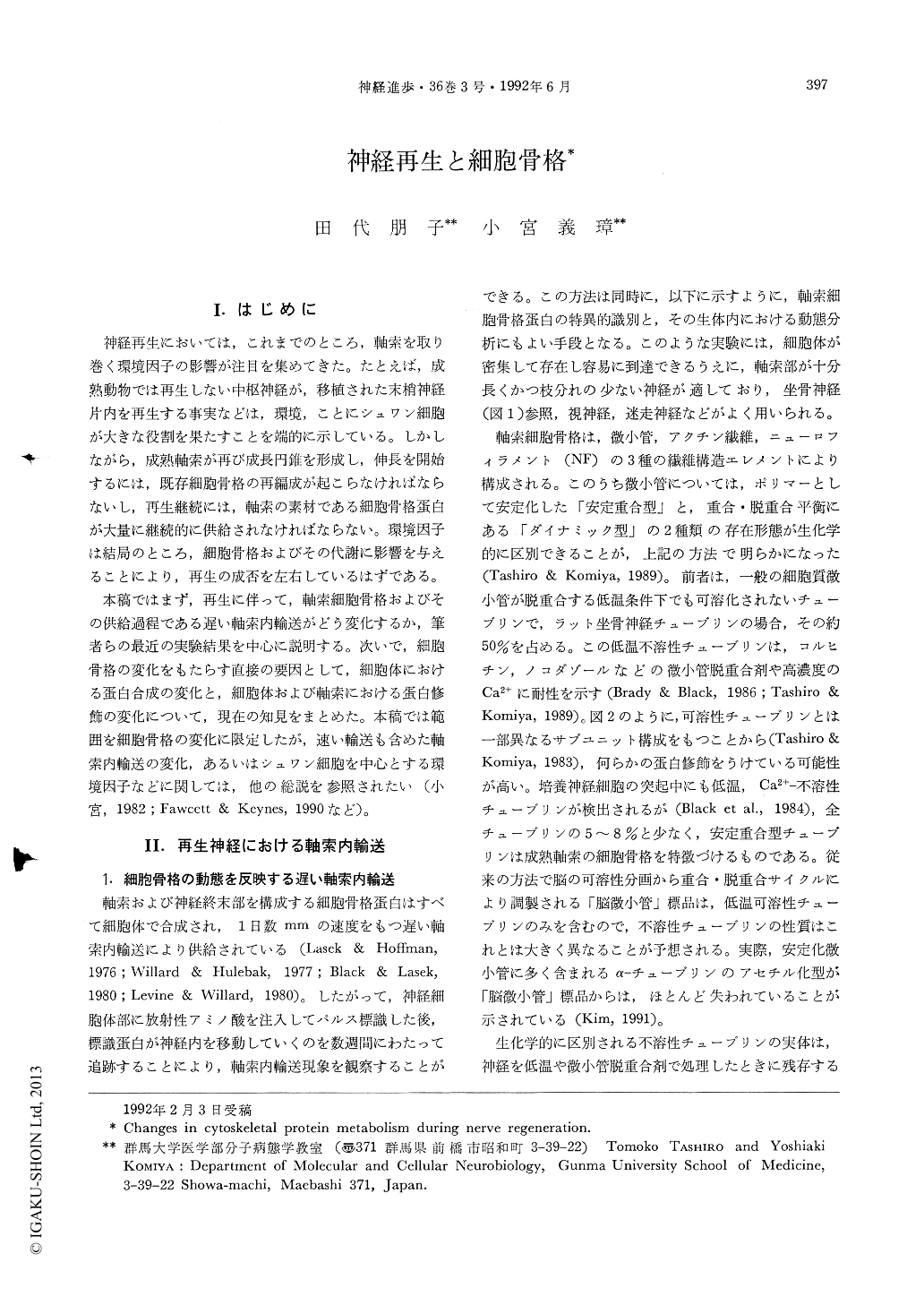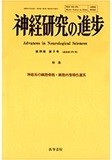Japanese
English
- 有料閲覧
- Abstract 文献概要
- 1ページ目 Look Inside
I.はじめに
神経再生においては,これまでのところ,軸索を取り巻く環境因子の影響が注目を集めてきた。たとえば,成熟動物では再生しない中枢神経が,移植された末梢神経片内を再生する事実などは,環境,ことにシュワン細胞が大きな役割を果たすことを端的に示している。しかしながら,成熟軸索が再び成長円錐を形成し,伸長を開始するには,既存細胞骨格の再編成が起こらなければならないし,再生継続には,軸索の素材である細胞骨格蛋白が大量に継続的に供給されなければならない。環境因子は結局のところ,細胞骨格およびその代謝に影響を与えることにより,再生の成否を左右しているはずである。
本稿ではまず,再生に伴って,軸索細胞骨格およびその供給過程である遅い軸索内輸送がどう変化するか,筆者らの最近の実験結果を中心に説明する。次いで,細胞骨格の変化をもたらす直接の要因として,細胞体における蛋白合成の変化と,細胞体および軸索における蛋白修飾の変化について,現在の知見をまとめた。本稿では範囲を細胞骨格の変化に限定したが,速い輸送も含めた軸索内輸送の変化,あるいはシュワン細胞を中心とする環境因子などに関しては,他の総説を参照されたい(小宮,1982;Fawcett & Keynes,1990など)。
In this review, we have focused on alterations in the synthesis and metabolism of cytoskeletal proteins during nerve regeneration. Since successful regeneration depends on enhanced supply of cytoskeletal proteins through axonal transport coupled with enhanced synthesis at the cell body, one of the key questions in understanding the molecular events occurring during regeneration will be how the metabolism of these proteins are regulated.
As the cytoskeletal proteins are supplied to the axon solely by slow axonal transport, the analysis of rates and solubilities of transported proteins yields information on the dynamic organization of the axonal cytoskeleton as described in the first part of the paper. Two forms of cytoskeletal polymers are found in the axon, stably-polymerized and dynamic, which can be distinguished biochemically. Approximately 50% of transported tubulin, 30% of actin, and more than 90% of neurofilament proteins are in the stably-polymerized form. Most of this stably-polymerized form is transported in slow component a (SCa), the slower of the two subcomponents of slow axonal transport, while slow component b (SCb) is enriched in the dynamic form. In the regenerating nerve, an increase in the relative proportion of SCb is observed together with the selective acceleration of SCb by 50%. Such alterations in transport is detected not only with the proteins synthesized in response to nerve injury but also with the preexisting proteins already in transit at the time of injury, resulting in enhanced supply of actin and tubulin to the elongating axon.

Copyright © 1992, Igaku-Shoin Ltd. All rights reserved.


